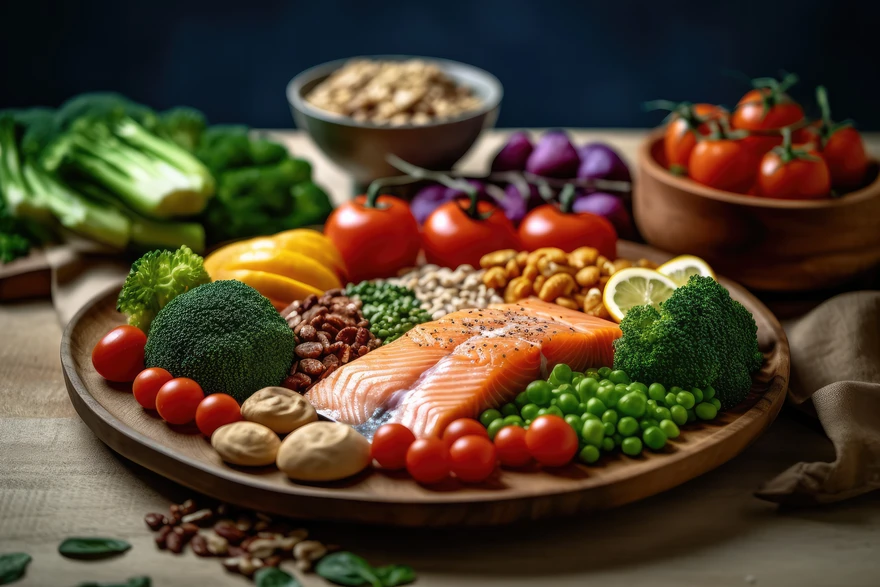Preventive Healthcare
Iron-Rich Foods: Boost Your Health Naturally
1811 Views
0

What are iron-rich foods?
Iron-rich foods are those packed with high levels of iron. This essential mineral is needed for growth, development, and the creation of healthy blood cells in our body. While many imagine a delicious steak or a hefty serving of spinach when thinking about iron-rich foods, the truth is that there are many other options available. From fish to eggs, nuts to legumes, and even an array of fruits and vegetables - all these are potent food sources rich in iron.
How much iron do you need per day?
The amount of iron you need per day varies based on age, sex, and health status.
- For adult males aged 19 and older, the recommended daily intake is typically 8 milligrams (mg).
- Adult females aged 19-50 require around 18 mg daily, due to menstrual blood loss. After menopause, the recommended intake decreases to 8 mg per day.
- Pregnant women have higher needs, 27 mg per day, to support foetal development and increase blood volume.
Iron plays a crucial role in oxygen transport and energy production, and iron deficiency which can cause fatigue, weakness and reduced cognitive function, that emphasizes on the importance of consuming foods high in iron.
Heme vs. non-heme iron: What’s the difference?
When you consume food sources rich in iron, it's absorbed mainly through your small intestine. There are two types of iron derived from food - heme and non-heme.
- Heme iron is present in animal foods like red meats, fish, and poultry that initially contained haemoglobin. It's easier for our bodies to absorb this type of iron.
- Non-heme iron mostly comes from plant sources or fortified foods like spinach, beans, enriched grains and cereals. However, some non-heme iron is also present in meat, poultry, and seafood since these animals eat plant foods.
Iron-Rich Foods
Iron-rich foods are essential for maintaining optimal health, as iron plays a vital role in oxygen transport throughout the body. Incorporating iron-rich foods into your diet ensures adequate levels of this essential mineral, supporting energy production and overall well-being. Combining these foods with a source of vitamin C can improve iron absorption. Including a variety of iron-rich foods in your diet can help prevent iron deficiency and promote overall vitality.
Meats High in Iron
Some meats known for their high levels of iron include liver, beef, chicken, pork, venison and lamb.
Seafood High in Iron
Seafood examples include oysters, mussels, shrimp, clams, sardines, mackerel, tuna and scallops.
Iron-Rich Vegetables
Spinach, kale, collard greens, beet greens, chard, sweet potatoes, broccoli and string beans are some iron-rich vegetables.
Iron-Rich Fruits
Iron-rich fruits include strawberries, watermelon, figs, dates, raisins, dried apricots and prunes.
Other Foods High in Iron
Other foods high in iron include eggs, beans, lentils, iron-fortified cereals, bread and pasta, molasses, peas and maple syrup. Now that we're aware of the various iron-rich foods, let's focus on individual food items with high iron content:
Spinach
Spinach is a superfood when it comes to iron content. Just one cup of cooked spinach provides more than 6 mg of iron!
Shellfish
Shellfish like clams and oysters are not only delicious but also packed with heme iron which is easily absorbed by the body.
Tofu
Ideal for vegetarians and vegans, tofu is an excellent source of non-heme iron. A half-cup serving provides about 3.4 mg of iron.
Poultry, Red Meat and Fish
Chicken liver tops the list with almost 13 mg of iron per serving. Beef steak and ground meat also pack a good punch. Fish like tuna and sardines aren't far behind either.
Whole Grains
Whole grains like quinoa or fortified cereals can significantly contribute to your daily iron intake.
Dark Chocolate
Did you know that a 30-gram serving of dark chocolate provides around 3-4 mg of iron? Now you have another reason to enjoy this treat!
Legumes
Kidney beans, chickpeas or lentils - all these legumes are rich sources of non-heme iron.
Seeds
Pumpkin, sesame, hemp and flaxseeds contain significant amounts of non-heme iron.
Nuts
Nuts like cashews and pine nuts can provide a good iron boost to your diet.
Dried Fruits
Dried fruits like prunes, raisins and apricots are not only sweet but they also serve as excellent iron sources.
How to get more iron
Iron absorption is a complex process that gets affected by what you eat and drink. For instance, elements like coffee, tea, and calcium-rich foods or drinks can hinder iron absorption. To maximize absorption, avoid combining these elements with meals that contain iron-rich foods.
A good way to boost absorption is by combining foods with heme iron (meats) with those containing non-heme iron (fruits and vegetables). Pairing iron-rich foods with vitamin C-rich foods like citrus fruits, tomatoes, and peppers can also help.
However, if you're still struggling to get enough iron from food alone, you may need an iron supplement. Talk to your doctor or healthcare provider about the best supplement for you. They can recommend the right dosage and advise on the best way to consume it.
Conclusion
Boosting your health naturally starts with making mindful choices about what we put on our plates. The role of iron-rich foods in maintaining our well-being cannot be overstated. From meat to seafood, iron-rich vegetables to fruits - the list is extensive! And remember, pairing these foods with vitamin C-rich sources can help enhance absorption.
In cases where diet alone isn't sufficient to meet your iron needs, it's essential to consult a healthcare provider for advice on supplements or further tests. When it comes to tests and diagnostics in India, Metropolis Healthcare stands as a trusted name. With advanced diagnostic labs and trained technicians who make at-home visits for sample collection - prioritizing your health has never been easier.













1701259759.webp)









 WhatsApp
WhatsApp